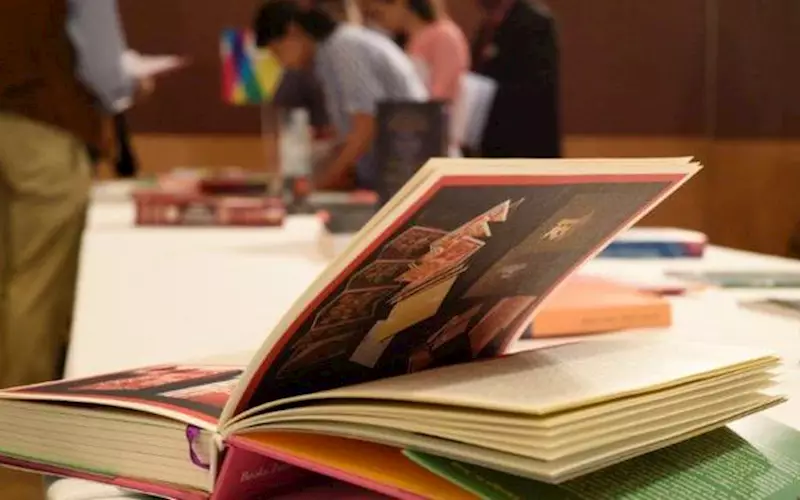Print talk: How print can grow its brand - III
Ramu Ramanathan, editor of PrintWeek India and WhatPackaging? looks at what the top brands are saying about ink on paper and paperboard; and more importantly what are their expectations from print fraternity
23 May 2018 | By Ramu Ramanathan
All about books
The India Book Market Report state the book numbers for 2015 is Rs 32,000-crore. This is the size of the Indian book market, out of which 94% is for education books.
Only Rs 1,800 crore is non-education trade books, and Rs 30,000 crore is for education book market in India.
India is the sixth largest book market in the world, and currently the second largest for books in English, behind the United States. Demographic trends support the high growth rate of the industry. Adult literacy levels in the country, now at 74 percent, are projected to hit 90 percent in 2020, which is expected to continue feeding demand for books.
A growing literacy rate, estimated to reach 90% in 2020, the government spends on education, digital initiatives, and outsourcing of publishing services to India, are all identified as the strengths of the Indian publishing industry. While the market is highly fragmented, it is also experiencing consolidation, in part as a result of the involvement of foreign multinationals.
The point is, we are looking at a market which is completely unorganised. And all of us are looking to transform it into an organised and consolidated market
Sheetfed survey
Last year in 2017, as per a PrintWeek India sheetfed survey, around 75 new presses were installed in India, most were loaded machines.
Heidelberg finished on 24 new printing machines, same levels as last year.
For RMGT, its India representative Provin Technos notched 15 installations, six of which were repeat orders from its existing customers.
Komori installed 26 presses until the end of December 2017 as compared to 31 it installed in 2016.
KBA with six presses (50 printing units), same as last year. Most of these presses went to packaging majors like Parksons Packaging, TCPL, York Packaging and Canpac.
Manroland Sheetfed was back in the reckoning, and signalled its revival with the announcement of two presses, while the Japanese press manufacturer Shinohara had two presses installed by its India representative Monotech Systems.
Print buyers are trying new ways of packaging their products, using plastic, metallised boards, besides paper and paperboard.
Surat’s Jain Offset Print received the Special Jury PrintWeek India Awards in the Packaging Converter category on the strength of its samples which feature fine textured effects without use of any chemical. The company produced reflection micro embossing and unusual colour combination like MYK, magenta and black, CMY and spot colours printed on LWC duplex board and ITC Sapphire paper.
Noida-based HBD Packaging received an Award for the Alo Frut carton. It was produced a special MetPET printing with drip-off coating. The job is printed on a Roland seven-colour with online coater.
A brief look at inks
The estimated growth in the newspaper segment was around 2% and in packaging around 8%. The bottomline reduction for the industry was in excess of 20-25%. This reduction in profits cannot be totally passed on to demonetisation and GST. The major reason for lower bottomline was the increase in raw material prices and the industries' inability to get a price increase from the customer.
The All India Ink Manufacturers Association had taken up with GST Council the 18% levied on inks and we were successful in reducing it to 12%. Again, we approached the GST Council to reduce the GST on varnishes and I understand they hope to bring it down to 18%
All of us love our cars. And most of us pay through our nose to fuel it. The future looks scary. There is expected to be an increase in petroleum price. How much will this affect the ink manufacturers’ input raw material prices?
Not only petroleum, the prices of all raw materials are on the up since 17 October 2017. We expect the prices of inks to go up by around Rs 8-10 per kg and UV coatings to rise by Rs 30 per kg.
Gravure still enjoys 85%+ of the liquid inks segment. But we see new investments in the CI flexo and narrow web segment by the existing gravure printers. Flexo will definitely have higher growth than gravure in the coming years.
The total global ink market is estimated to be around USD 16-17 billion, which includes all kinds of inks. The UV inks will have to be 20% if it has to be worth USD 3.5 billion. This seems to be incorrect.
In India, we estimate UV inks market to be close to 2,000 tonnes and UV coatings around 4,500 tonnes. This is less than 3% of the total ink market.
(This is the part-III of Ramu Ramanathan’s talk on a houseboat in Kochi at the session hosted by All India Federation of Master Printers and the GC members on 4 February 2018)














 See All
See All